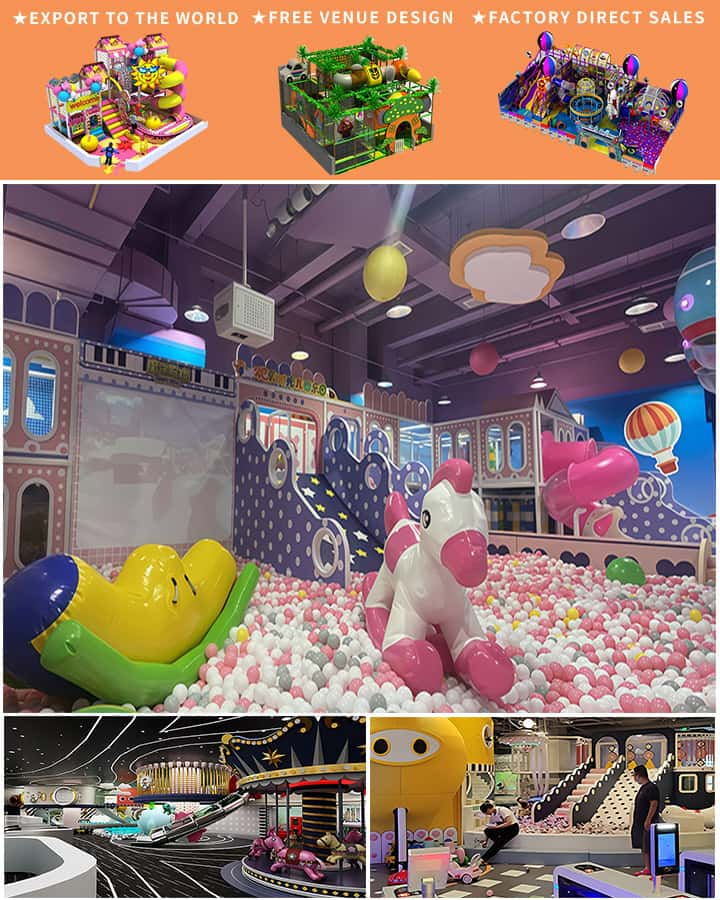Creating a children’s playground is a wonderful venture that can bring joy, foster physical activity, and promote social interactions among young ones. However, constructing a safe and enjoyable space requires thoughtful planning and consideration of various elements. This guide will walk you through the essential steps in building a children’s playground.
1. Selecting the Right Location
Safety First: Choosing an appropriate location is critical when building a playground. Look for a flat area with soft, impact-absorbing ground cover such as rubber mulch, wood chips, or sand to minimize injury risks from falls. Ensure the site is away from traffic zones, busy streets, and potential hazards like bodies of water, electrical lines, and sharp objects.
Accessibility: The playground should be easily accessible to all children, including those with disabilities. Consider the installation of ramps where necessary and ensure pathways are wide enough for wheelchairs.
2. Designing the Playground
Understand Your Audience: Tailor the playground design to the age group it will serve. Younger children (toddlers and preschoolers) benefit from smaller equipment with gentle slopes and lower heights, while older kids (school-age) may enjoy more challenging structures like climbing walls and slides with greater height and speed.
Variety and Inclusivity:
Incorporate a variety of play equipment to cater to different interests and abilities. Include swings, slides, seesaws, climbing frames, balance beams, and spinning toys. Ensure inclusive play by providing equipment suitable for children with different abilities, such as sensory play panels, adaptive swings, and wheelchair-accessible merry-go-rounds.

3. Material Selection
Durability and Safety: Choose materials that are durable, weather-resistant, and non-toxic. Metal structures should be coated to prevent rust and sharp edges. Wooden components should be pressure-treated or made from naturally rot-resistant woods like cedar. Avoid materials that splinter easily or become too hot in sunny conditions.
Environmental Considerations: Opt for eco-friendly options such as recycled plastics or sustainably sourced wood. These choices not only reduce environmental impact but also often provide better longevity and safety features.
4. Safety Measures
Soft Surfacing: Use compliant surfacing materials under play equipment to cushion falls. Proper depth (typically 6-12 inches) and maintenance of these surfaces are crucial. Regularly check for compaction and replace materials as needed.
Equipment Standards: Ensure all playground equipment meets national safety standards and guidelines set by organizations like the American Society for Testing and Materials (ASTM) or the Consumer Product Safety Commission (CPSC). Regular inspections and maintenance are essential to keep the playground safe over time.
5. Engaging Features
Creative Themes: Incorporating themes like jungles, pirate ships, or space adventures can make the playground more engaging and imaginative. These themes can inspire creative play and add a unique charm to the playground.
Interactive Elements: Consider adding interactive elements such as musical instruments, water features (where feasible), chalkboards, or educational games. These additions encourage active learning and enhance the overall play experience.
6. Community Involvement
Planning with Local Families: Engage community members, particularly parents and caregivers, in the planning process. Their input on design preferences, needs, and potential hazards can lead to a more user-friendly and appreciated playground.
Maintenance and Upkeep: Establish a routine schedule for playground maintenance and invite community volunteers to participate. Regular upkeep ensures the playground remains safe and enjoyable for years to come.
Conclusion
Building a children’s playground is a rewarding project that requires careful planning, safety considerations, and community involvement. By following this guide, you can create a vibrant, safe, and inclusive space where children of all ages and abilities can play, learn, and grow together. Remember, the ultimate goal is to provide a fun environment that fosters creativity, physical activity, and social interaction, making it a cherished part of the community for generations to come.




